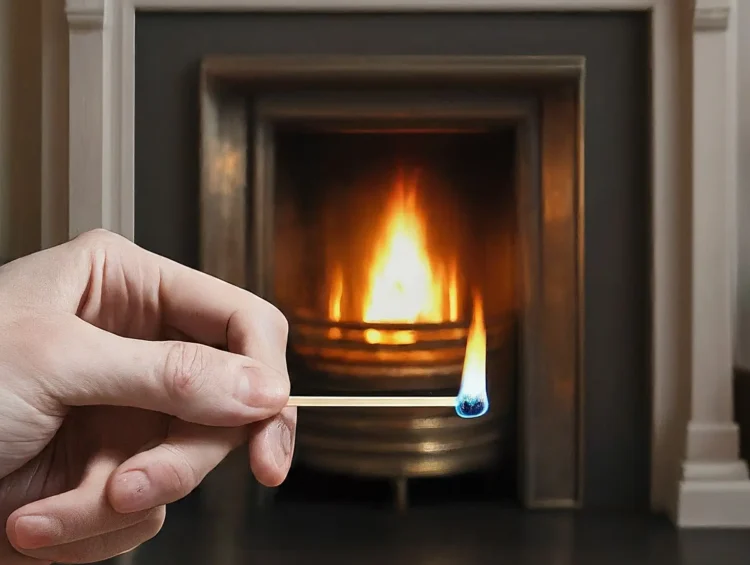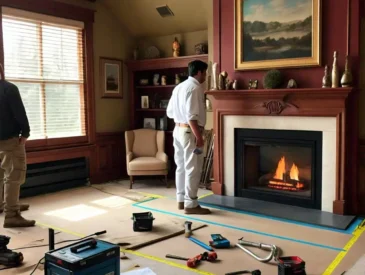A gas fireplace is a wonderful addition to any home, providing both warmth and ambiance without the hassle of traditional wood-burning options. But what do you do if the power goes out?
The method for lighting a gas fireplace without electricity depends on its ignition system. For an IPI valve ignition system,
you’ll need to locate the control box and slide the switch to “ON.” However, for standing pilot light systems, the process can vary depending on the manufacturer.

Let’s delve into the details of these gas fireplace ignition systems and how to light them without electricity.
Types of Gas Fireplace Ignition Systems
Gas fireplaces have come a long way in terms of technology. Two main types can be ignited without electricity, but each requires a slightly different approach.
Regardless of the system, always ensure the chimney vent is open before lighting the fireplace. If your gas fireplace lacks external ventilation, use it sparingly during power outages to mitigate potential risks.
Intermittent Pilot Ignition (IPI) Valve System
This system relies on electricity to initiate the flame. An electrode sparks the pilot flame, which then lights the main gas burner, creating the desired fire.
To ensure a successful ignition, the main burner must be on. The IPI valve system is designed to position the burner directly under the pilot flame for immediate lighting. Notably, this system is energy-efficient, as it only ignites the flame when needed.
During a power outage, the IPI valve system can operate with the help of backup batteries. These batteries power the ignition process but note that other features like fans and lights won’t function without electricity.
How To Light an Intermittent Pilot Ignition (IPI) Valve System Without Electricity
1. Check the batteries: Ensure they’re the correct size (four AAs or two D-cells) and properly installed.
2. Locate the control box: typically found behind or beneath the fireplace.
3. Slide the switch to the ‘ON’ position: This is crucial for operating the fireplace without electricity.
Remember, only use batteries during power outages and remove them once power is restored to preserve their lifespan.
If your IPI valve system doesn’t have a battery backup, consult your user manual for specific instructions.
Standing Pilot Light System
Unlike the IPI valve system, Standing Pilot Light Systems don’t rely on electricity for ignition. They maintain a constant flame at the base of the burner, ready to light the main burner for heat.
The thermocouple is a vital component of this system, connecting the gas pipe to the burner and enabling the fireplace to function without electricity.
Although the blower and fan won’t operate during a power outage, the fireplace will still emit heat within a limited radius.
How To Light a Standing Pilot Light System Without Electricity
1. Ensure the gas valve is turned on; it’s usually near the gas meter.
2. Locate the pilot light, which can be behind the control panel or beneath the mainframe. Use a flashlight if needed.

4. Turn the dial to ‘ignite’. Always set it to ‘off’ when the fireplace is not in use.
5. Depress the knob until it clicks rhythmically. This triggers the pilot light.
6. Hold the knob until a flame appears under the logs. It should ignite within 10 seconds. If not, wait and try again after 10 seconds. It may take a few attempts.
Once the pilot light is established, you can operate the fireplace as usual.
In Conclusion
With the right knowledge, you can enjoy the warmth and comfort of your gas fireplace even during a power outage. Remember to follow safety guidelines and conduct regular maintenance to ensure your fireplace operates smoothly.
Stay warm and safe!





